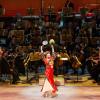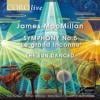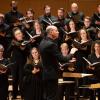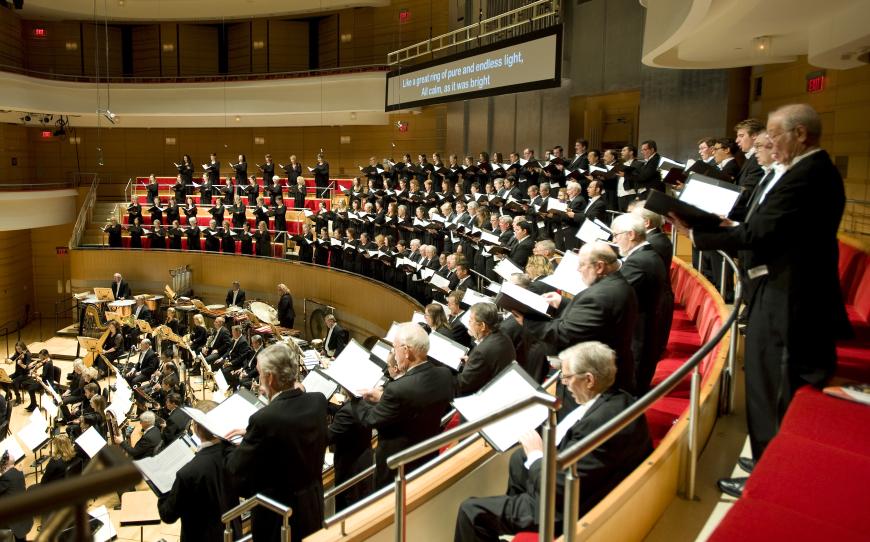
For their final concert of the 2022–2023 classical season, members of Pacific Chorale and Pacific Symphony, under the baton of Music Director Carl St. Clair, will give the world premiere of James MacMillan’s Fiat Lux. The program — dubbed “Cathedrals of Sound” and marking the July 2019 consecration of Christ Cathedral in Garden Grove, CA — will be performed June 15–17 at Renée and Henry Segerstrom Concert Hall.
Written in 2020 but delayed by the pandemic, MacMillan’s 30-minute work, set to a text by Dana Gioia, a California poet laureate and former chairman of the National Endowment for the Arts, is part of a concert that also includes Gregorio Allegri’s Miserere mei, Deus and Richard Strauss’s Death and Transfiguration. There will also be a special encore performance at Christ Cathedral on June 20, celebrating the refurbishment of the Hazel Wright Organ, the fifth-largest pipe organ in the world.
For the 63-year-old MacMillan, considered the preeminent Scottish composer of his generation, the commission from Howard and Roberta Ahmanson was a chance to make use of a poem by Gioia. MacMillan explained, by phone from Northern California: “I’m a little familiar with Dana’s work — it’s known in the U.K. and greatly respected. We also share similar interests, and I always found something very beautiful and numinous about his words. … It was a great thrill to eventually meet him and [see] what this piece might be.”
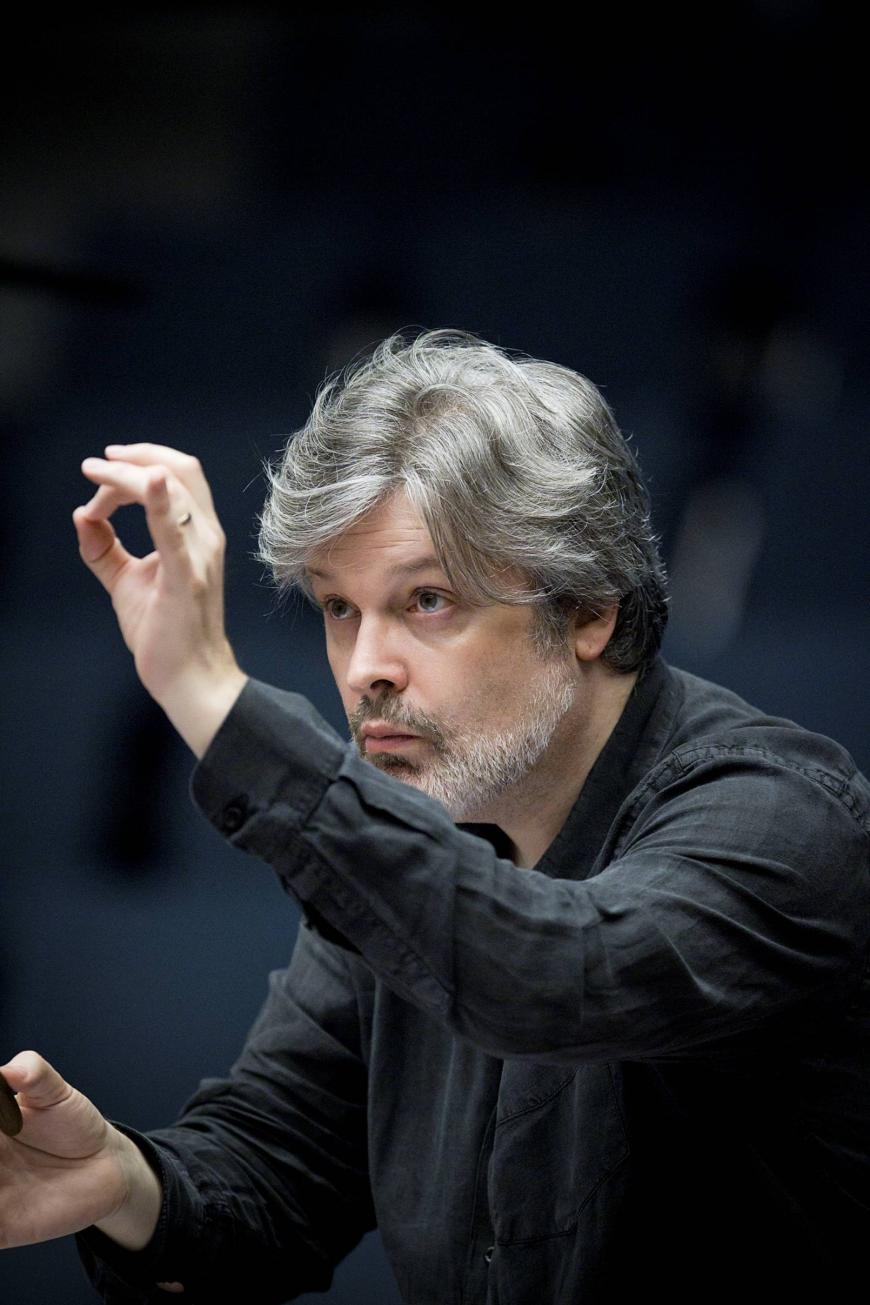
MacMillan, who got together with Gioia in 2019, pointed out that Fiat Lux is connected with the idea of consecrating a sacred space. “It also hints at the creation story — the beginning of the universe — and it’s a mixture of Latin and English.”
The large-scale work, which features soprano Elissa Johnston, baritone Christopher Maltman, and organist David Ball, is a single, through-composed movement made up of five sections: “In the Beginning,” “Chorus,” “Litany of Light,” “Light of the World,” and “Hymn: Cathedral of Light.” MacMillan said his process consists of setting “lots of texts.”
The composer pointed out, “I love setting texts. When there’s text involved, it sets not just the structure but mood, direction, feeling, and emotion. It’s always important to live with the text for quite some time, but once that happens — as in the case of this piece — the music comes quite fluently.”
This world premiere also marks a new relationship with conductor St. Clair. “I hadn’t worked with Carl before,” said MacMillan. “I’ve heard so much about [him and Pacific Symphony]. They have a great reputation on the other side of the Atlantic, and I’ve heard some wonderful recordings, so I’m looking forward to hearing them and seeing them.”
The Scotsman is also keen on hearing Pacific Chorale, which has been led by Artistic Director Robert Istad since 2017, perform his work. “I know that the choral scene on the West Coast is phenomenally good, [and] the chorales are especially very well known. It will be such a thrill to hear them rehearse, [being] in the room with them, and being in the hall.”
MacMillan, an outspokenly Catholic composer, has been exploring sacred themes for decades. His religion has influenced “a lot of what I’ve done, but not every piece I write is sacred.
“I like abstract music as well,” he said, “and I love setting ancient sacred texts and hybrid texts — half in the sacred realm but also in the secular realm, too. Dana’s poem celebrates this place that is California, and there are references throughout. It hints at the consecration of a sacred space, but beyond that it’s the sacred space of this land, California.”
Istad, who has conducted MacMillan’s works before and is preparing the chorus for Fiat Lux, explained that the final words of the text discuss Christ Cathedral itself and the landscape of California: “Upon this rock, our cross and spire built in a land of quake and fire.”
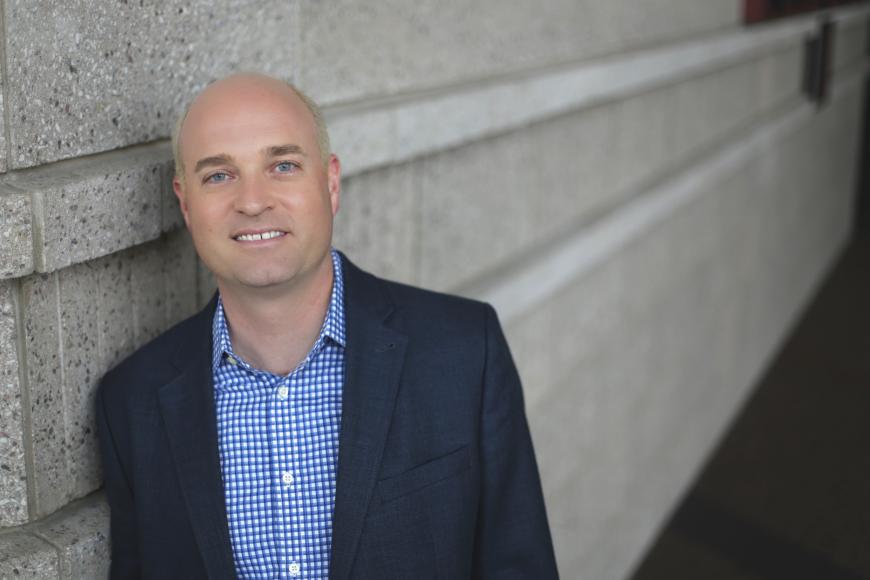
And while St. Clair may be leading the performance, Istad is busy with the score and the orchestrations, too. “I prepare my chorus to balance with the orchestra. In this case, it almost feels like the way [Maurice] Ravel used the chorus in Daphnis and Chloé, in the sense that he envisioned the chorus being an extra instrument. In my study of the score, [Gioia] has given us text, but it all connects deeply with the orchestra.
“And Dana,” added Istad, “was attracted to the image of light, as so many composers have been. Christ Cathedral is made of glass, so it’s filled with light all the time. It is spectacular what the Catholic Church did to modernize the building. There are beautiful works of art; your breath is taken away; it feels monumental.”
Pacific Chorale has a total of 267 singers and is one of the busiest choral ensembles in the country. Istad explained that he programs about five or six annual concerts for the organization, depending on the year, with Pacific Symphony also featuring the chorus on another five or six programs. In addition, Pacific Chorale works with the Los Angeles Philharmonic on occasion, as it did for a recording of Gustav Mahler’s Symphony No. 8 (“Symphony of a Thousand”), which won the 2022 Grammy Award for Best Choral Performance.
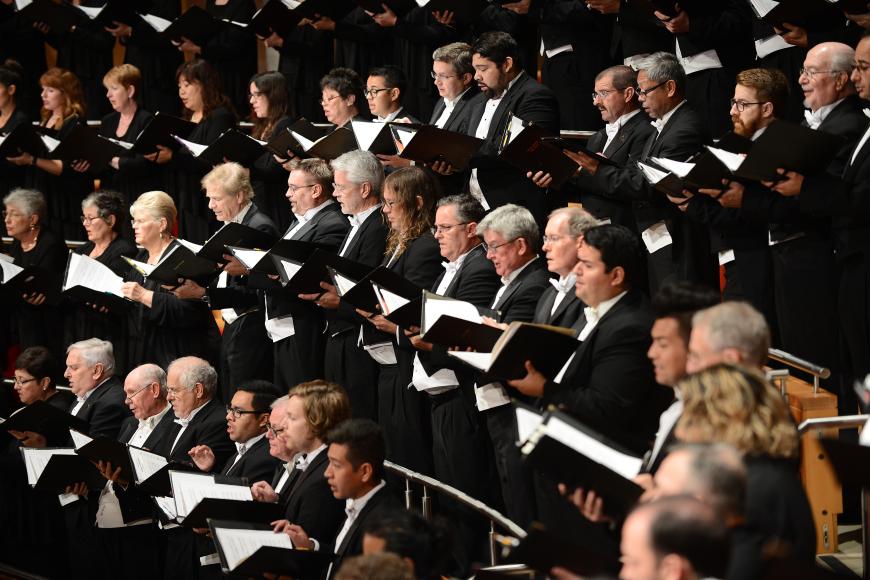
Also a professor of music and director of choral studies at California State University, Fullerton, Istad said he would love for audiences at these upcoming concerts “to see that choral music, and specifically chorus with an orchestra, is one of the most powerful artistic expressions available to human beings. We are contemporary, but we also cherish the history of our art form.
“I think,” added Istad, “some people have a vision of choral music and orchestral music as staid, but we challenge people with that perception to experience the power of that kind of music-making in person. Once you get them there, they want more. I want them to say, ‘I can’t believe that experience.’ That’s the challenge.”
MacMillan, who was asked to compose the funeral music for the late Queen Elizabeth II in secret in 2011, admits to not knowing about audiences’ explicit wants. “I can’t prejudge my audience, who they’ll be, et cetera. An audience is made up of individuals who all react in different ways to music they hear. They may be curious, hungry, thirsty to encounter a brand-new piece of music they don’t know yet — many in the audience will be like that — but I’m delighted there’s a thirst and excitement for new music in L.A.”


